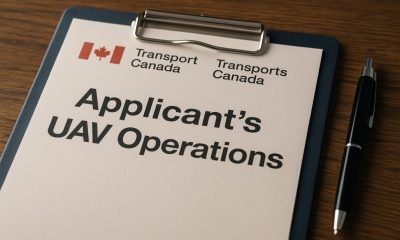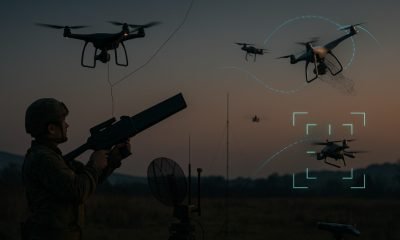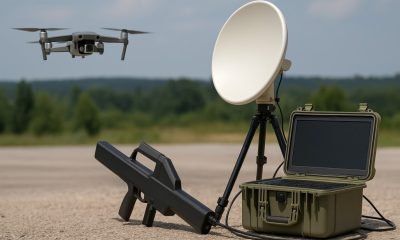Public safety
Drone Safety Tips

In an age where drones are no longer just high-tech toys but essential tools in various industries, drone safety tips and training has become more crucial than ever. It’s not just about flying; it’s about flying right. Imagine a world where drones zip around, delivering pizzas faster than you can say “extra cheese, please!” But without proper training, that pizza might just end up on someone’s roof. Let’s dive into why drone safety tips and training is not just smart but necessary.
Top Drone Safety Tips: Fly Smart, Fly Safe
Know Your Drone
Spend time understanding your drone’s capabilities and limitations. Familiarize yourself with the controls, flight modes, and emergency procedures. This knowledge is crucial in preventing accidents and responding effectively in unexpected situations.
Check Weather Conditions
Always check the weather forecast before a flight. High winds, rain, and snow can affect your drone’s performance. Avoid flying in adverse weather to maintain control and ensure the safety of others.
Pre-Flight Checklist
Develop a pre-flight routine to check your drone’s condition. Ensure the battery is fully charged, propellers are intact and securely fastened, and the firmware is up to date. Regular maintenance checks can prevent technical failures mid-flight.
Maintain Line of Sight
The drone should always be visible to you without the aid of binoculars or other devices. This ensures you can monitor its flight path and respond to any hazards or changes in the environment.
Avoid Crowded Areas
Flying over crowds or heavily populated areas increases the risk of accidents and invasions of privacy. Choose open, unpopulated areas for flying, especially if you’re a beginner.
Respect Privacy
Be mindful of others’ privacy when flying your drone. Avoid flying over private properties, and never capture photos or videos of people without their consent. Responsible flying includes respecting the privacy and personal space of others.
Stay Below Maximum Altitude
Adhere to the altitude limits set by local aviation authorities to avoid interference with manned aircraft and ensure airspace safety. In many regions, this limit is 400 feet above the ground.
No Fly-Zones
Familiarize yourself with no-fly zones in your area, which often include airports, military bases, and national parks. Flying in these areas is prohibited and can lead to legal consequences.
Don’t Fly Near Other Aircraft
Always yield the right of way to manned aircraft. If you see an aircraft approaching, descend and steer your drone away to avoid potential collisions.
Be Sober and Alert
Never operate a drone while under the influence of alcohol or drugs. Ensure you are alert and focused when flying, as distraction or impairment can lead to serious accidents.
Take a Safety Course
Enrolling in a drone safety course can greatly enhance your flying skills and knowledge of regulations. Even experienced pilots can benefit from refresher courses or advanced training.
Be Prepared for Emergencies
Have a contingency plan for emergencies such as battery failure or loss of GPS signal. Know how to manually control your drone and how to safely land it in case of technical issues.
The Need for Drone Safety Training
Why should you care about drone safety? Well, for starters, nobody wants to be known as the neighbor who crashed their drone into the local park’s duck pond. Jokes aside, flying with confidence comes from understanding how to operate your drone safely and legally. With increasing reports of near-misses between drones and aircraft, the importance of being well-trained cannot be overstated.
What Does Drone Safety Training Entail?
Drone safety training isn’t just about learning to fly; it’s about flying with knowledge and responsibility. It’s an essential step for anyone looking to take their drone into the skies. Here’s what this training typically includes:
Understanding the Basics of Drone Operation
- The ABCs of Drone Flying: This covers the fundamental aspects of drone flying, including understanding the different types of drones, their components, and basic flight operations.
- Control Mastery: Learning how to control your drone under various conditions and how to execute essential maneuvers safely.
Comprehension of Airspace and Aviation Regulations
- Airspace Classification: An overview of different airspace categories and understanding where drones are allowed to fly.
- Legal Framework: Comprehensive knowledge of the laws and regulations governing drone use in your region, such as those set by the FAA or Transport Canada.
Safety Procedures and Risk Management
- Pre-Flight Checks and Maintenance: How to conduct thorough pre-flight inspections and routine maintenance to ensure your drone is airworthy.
- Risk Assessment: Training on how to assess and mitigate risks associated with drone flying, including dealing with environmental factors and potential hazards.
Ethical Flying and Privacy Considerations
- Privacy Laws: Understanding the importance of respecting privacy when flying drones and how to comply with legal requirements regarding data collection and surveillance.
- Ethical Considerations: Best practices for ethical drone use, ensuring that your flying habits don’t infringe on the rights and privacy of others.
Emergency Response and Troubleshooting
- Handling Emergencies: Strategies for dealing with emergencies such as technical failures, loss of control, or unexpected environmental changes.
- Troubleshooting Common Issues: Skills for diagnosing and addressing common technical issues that might arise during a flight.
Practical Flight Training
- Hands-On Experience: Actual flying experience under the guidance of an instructor, providing an opportunity to apply theoretical knowledge in real-world scenarios.
- Scenario-Based Training: Simulated scenarios to practice response to various challenges and emergencies.
Examination and Certification
- Testing Knowledge and Skills: A formal assessment of your knowledge and flying skills, often culminating in a certification that acknowledges your competency in drone operations.
Drone safety training is comprehensive, covering everything from the basics to more advanced concepts. It’s about building a foundation of knowledge, skills, and respect for the rules and others. This training empowers you to not just enjoy flying your drone but to do so in a way that is safe, responsible, and compliant with regulations.
Empowering Communities through Knowledge
Knowledge is power, and drone safety training provides exactly that – power to the people! Community safety programs are popping up everywhere, turning drone enthusiasts into responsible pilots. These programs don’t just teach you how to avoid flying into a tree; they empower you to use drones to benefit your community.
FAA Guidelines: The Rulebook for Safe Drone Operations
Understanding FAA guidelines is like learning the rules of the road, but for the sky. The FAA isn’t just a bunch of fun police; they’re the guardians of our airspace, ensuring that everyone can enjoy flying drones without turning the skies into a chaotic, propeller-fueled frenzy. Let’s break down what you need to know:
1. Registration is Key
Before you can take your drone to the skies, you need to register it with the FAA. Think of it as giving your drone its official flying license. If your drone weighs more than 0.55 pounds and less than 55 pounds, registration is a must.
2. Know Your Categories
There are different rules for recreational flyers, commercial pilots, and public safety and government operations. Make sure you understand which category you fall into, as the guidelines vary.
3. Flying Guidelines
- Fly below 400 feet: To avoid mingling with manned aircraft, keep your drone below 400 feet when flying in uncontrolled (Class G) airspace.
- Keep your drone within sight: If you can’t see your drone, you’re flying blind, and that’s a big no-no. Always keep it in your line of sight.
- Respect privacy: Don’t be a peeping drone; respect people’s privacy when flying.
- Never fly near other aircraft: This is particularly crucial near airports. Give way to all manned aircraft.
4. No-Go Zones
Some areas are off-limits for drone flights, like near airports, in national parks, or over crowded events. The FAA’s B4UFLY app can help you identify where you can and can’t fly.
5. Stay Sober
Flying under the influence of alcohol or drugs is not only dangerous but also illegal. Always fly your drone sober.
6. Take a Test
Recreational flyers must pass an aeronautical knowledge and safety test and carry proof of test passage. Consider this your drone driving test.
7. Emergency Response
Never interfere with emergency response efforts. If there’s a wildfire, for instance, keep your drone grounded to avoid hindering firefighting aircraft.
By following these FAA guidelines, you’re not just complying with the law; you’re contributing to a safer airspace for everyone. Remember, a well-informed drone pilot is a safe drone pilot.
The Impact of Training
Here’s the kicker: well-trained drone pilots can make a significant impact. From aiding in search and rescue operations to helping farmers monitor crops, the possibilities are endless. With community safety at the forefront, trained pilots can ensure that the benefits of drone technology are harnessed safely and effectively.
Conclusion
In the world of drones, ignorance is not bliss; it’s a liability. Drone safety training is an investment in yourself and your community. As we embrace this technology, let’s do so with knowledge and skill. After all, the future of drones is not just in the skies, but in our hands
For other drone safety articles visit our page.











